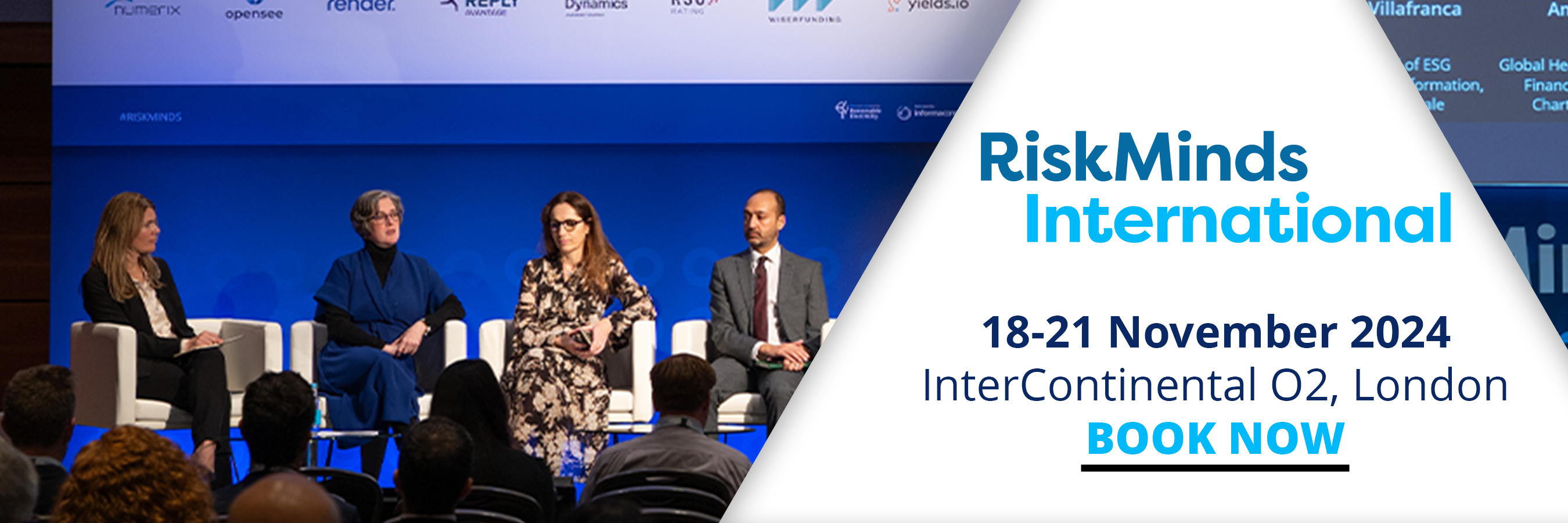Mitigating credit risk and returning to profitability: Key lessons learnt on financial risk

On the final day of RiskMinds International, running 13-16 November 2023 in London, a panel of Chief Risk Officers and Chief Credit Officers at OCBC Bank, HSBC UK, Development Bank of Ghana and Juno Bank, among others, discussed how best to mitigate risk in your credit portfolio. CROs from Nordea, HSBC Wealth and Mediobanca then formed another panel to look at how a tight customer focus can ensure bank profitability in tough times.
Mitigating credit risk was front and centre for the first panel of the day where CROs and CCOs shared with the RiskMinds audience the challenges they are facing from geopolitical and supply chain shocks brought about by the ‘hot’ and ‘cold’ wars in Ukraine, Gaza and Taiwan. The rising inflation and interest rates (IR) which caused the Silicon Valley Bank (SVB) failure earlier this year were also of concern.
That collapse highlighted the velocity of risk events in our digitalised world. Asset quality and spread are key metrics in ensuring survival. Other non-traditional recent credit risks facing the panel of CROs in the past year included:
- Volatility in emerging markets like crypto.
- Sanctions impacting the trophy asset: real estate market.
- Margin calls in the private equity (PE) space now that money is no longer cheap.
One of the panellists said the key to success was to plan, plan, plan. “Don’t wait for a crisis to figure out what you will do. Credit risk is a continuing business-as-usual thing that requires constant hard work to identify issues.”
“Getting it right in the credit field starts with getting your risk appetite right,” said another panellist, while advocating then bringing it down to each segment, making it granular and appropriate for each department of a bank, whether it is a wholesale or consumer bank unit.
Covid-19 & Ukraine: Examples of risk management in action
You also need to stress test and continuously monitor to see if the pre-identified operational risk appetite is still correct. The bank of one of the speakers realised during the pandemic that they needed to know who among their customers would emerge strongly after almost two years of business disruption, government assistance and, crucially, loan amnesties.
“We found out by using data analytics on transaction flows to identify patterns of behaviour that could help us identify who was doing well during Covid-19 and who wasn’t, feeding that into on-going credit risk assessments,” explained the panellist.
Another panellist next shared how the Ukraine war impacted their credit risk mitigation procedures and their clients around the world, emanating from the instability it caused in energy prices, sanctions and so on. The bank adopted a classic 3-line defence, which could just as easily have been applied to Brexit impacts. The bank looked at:
- First order (credit) risk: Immediately assessing how much exposure the bank had to the Ukraine war.
- Second order risk: Going deeper to identify where that risk was on a sector-by-sector basis and in what countries. What it meant for the portfolio was the guiding investigatory principle here.
- Third order risk: Broader impacts on supply chains around the world were investigated next as the bank sought to mitigate the impact of the Ukraine war on its business, and that of its clients where it could help.
Focus on the customer & risks to ensure profitability in tough times
The final RiskMinds CRO panel of the last day of the conference in London focused on customer-centricity and returning a bank to profitability – despite all the recent macroeconomic and geopolitical challenges.
During the present unstable times, it’s imperative to know your customer really well, serve them, design products that do what they claim, and price them competitively – taking into account all the attendant risks while doing so, whether that is cyber risk if you’re a digital neo bank or ‘green’ considerations if you’re a corporate bank. Climate risk is another market disruptor for consumer and corporate clients, depending if you’re assessing the insurance exposure of a house on a flood plain or an ESG rating for a company.
Remaining close to the customer is what is crucial. Do that and the risk appetite, price and everything else will follow, including good profitability if you back it up with great customer service. A customer-centric approach is a vital necessity.
Fundamentals remain
Focus on the fundamental need to look at the customer and assess risk. That does not change, whatever the present macro or micro induvial challenges might be.
“Good product governance and lifecycle management are also fundamental in ensuring you don’t store up trouble for the future,” said one of the panellists. “That involves good design, staff training and monitoring.”
Training and recruitment is especially pertinent in regard to the cyber risk facing banks as they and their customers increasingly go online and digitalisation advances. As a panellist said: “You need the same cyber skills inside your bank as those possessed by those outside the bank – if not better.” Stress testing of third parties and partners in the cloud is vital.
“A pure profitability measurement is a good place to start as the first line of defence,” said a panellist, as you cannot go wrong or lose money if a product has been designed, targeted and priced correctly at customers in the first place.
Aligning the risk and the profit is after all the crucial nexus for any bank. CROs were reminded to stay close to this fundamental truth during the present unstable times.
